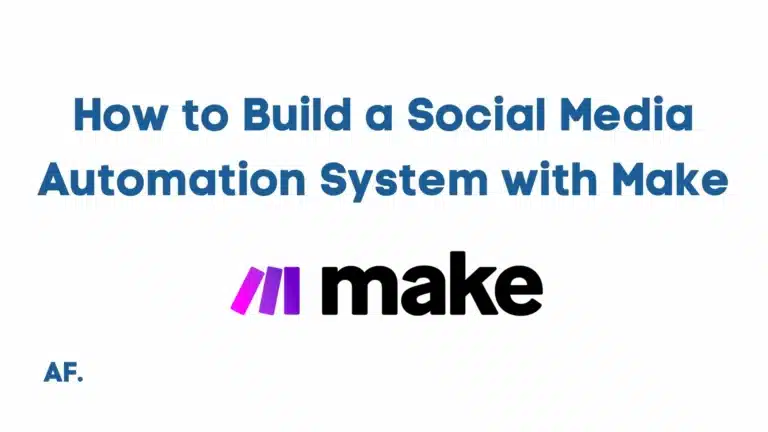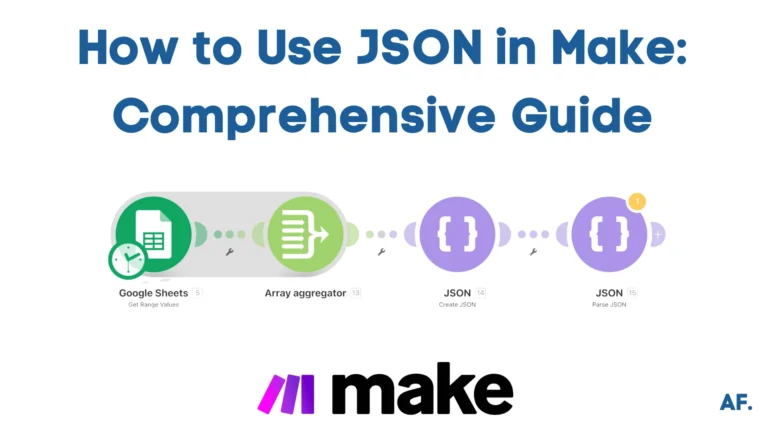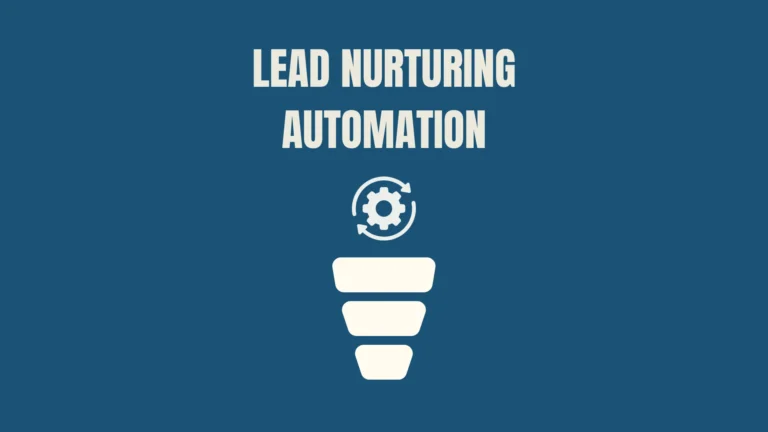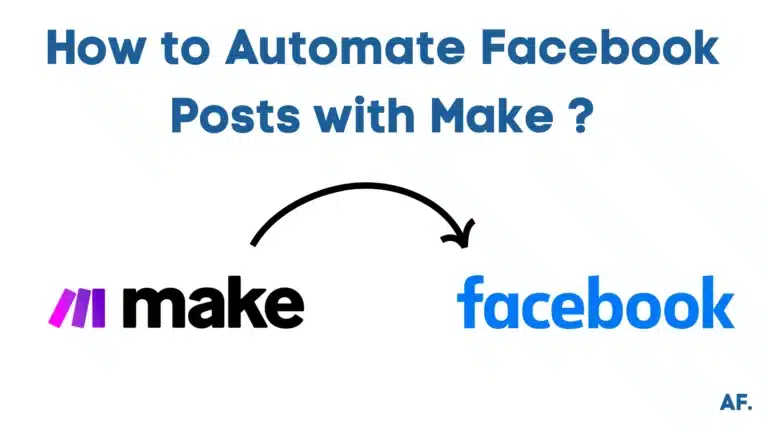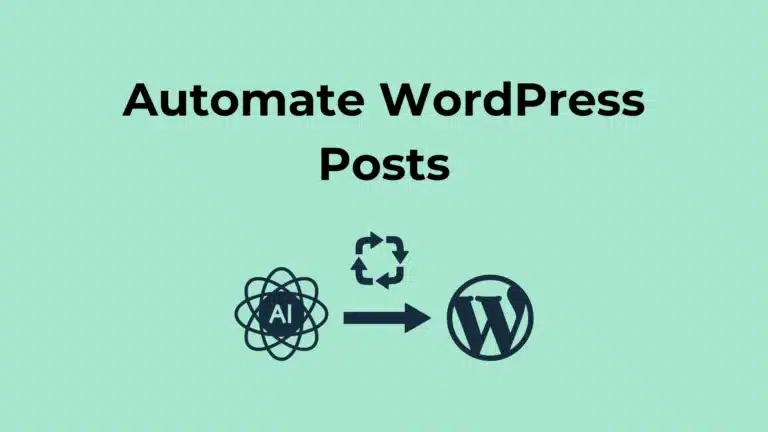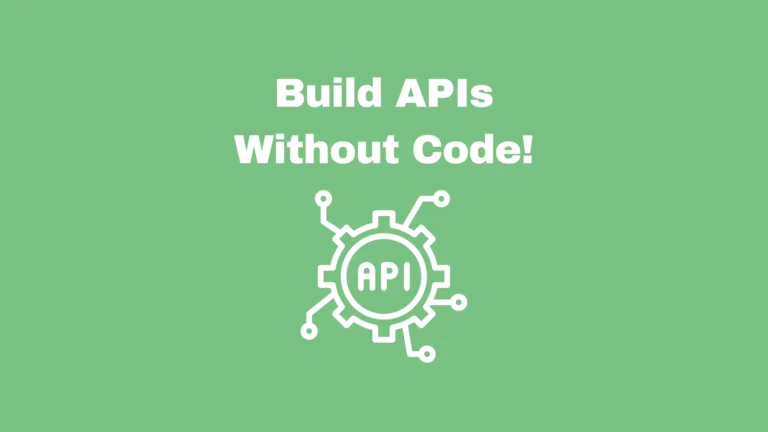PDF to Google Sheets: Quick Automation with Make & ChatGPT
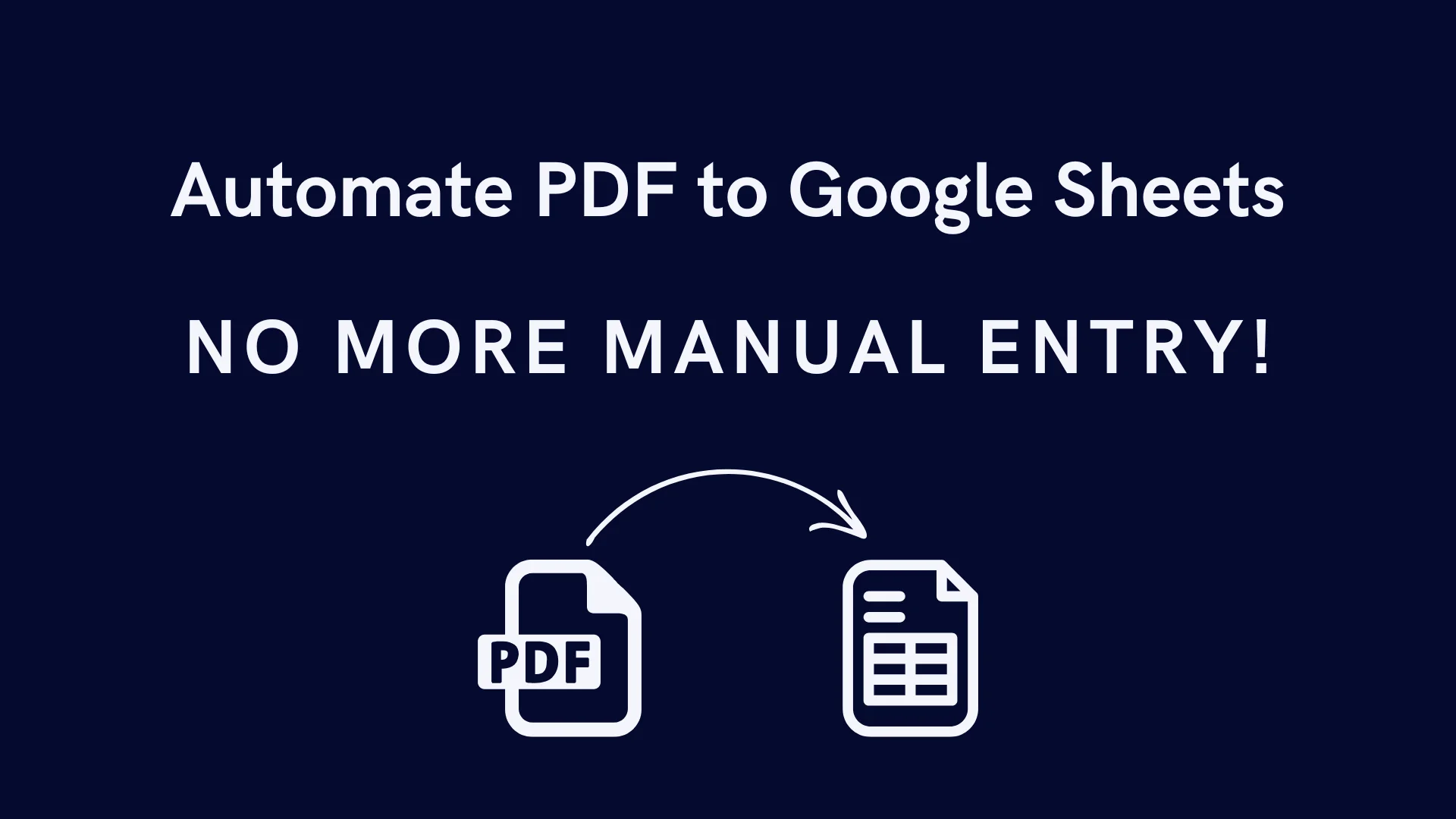
Have you ever found yourself manually copying data from PDFs into Google Sheets? What a headache! 🤯 According to recent studies, professionals spend an average of 4.5 hours per week on manual data entry tasks. I’ve been there, and let me tell you – there’s a better way! In this guide, I’ll show you how to transform your PDF documents into perfectly formatted Google Sheets using the power of Make (formerly Integromat) and ChatGPT. Get ready to say goodbye to mind-numbing copy-paste sessions and hello to automation magic!
What You’ll Need Before Starting
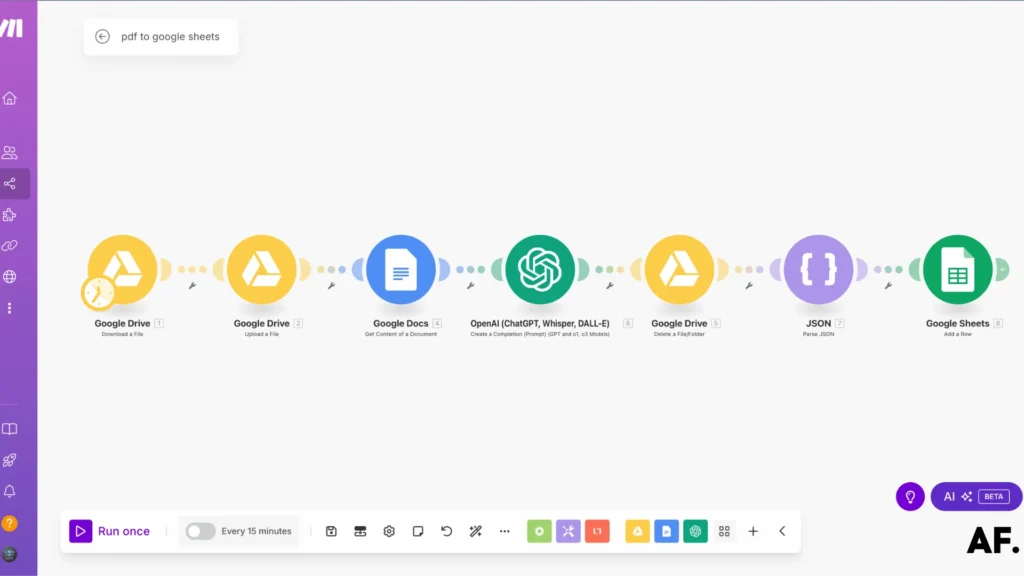
- Google Drive Account
- Open AI Account
How to convert PDF to Google Sheets
Step 1: Invoice Folder
Let’s start with the basics: Create a dedicated home for your invoices in Google Drive and set up a new folder to store all your PDF invoices. Think of it as your digital filing cabinet!
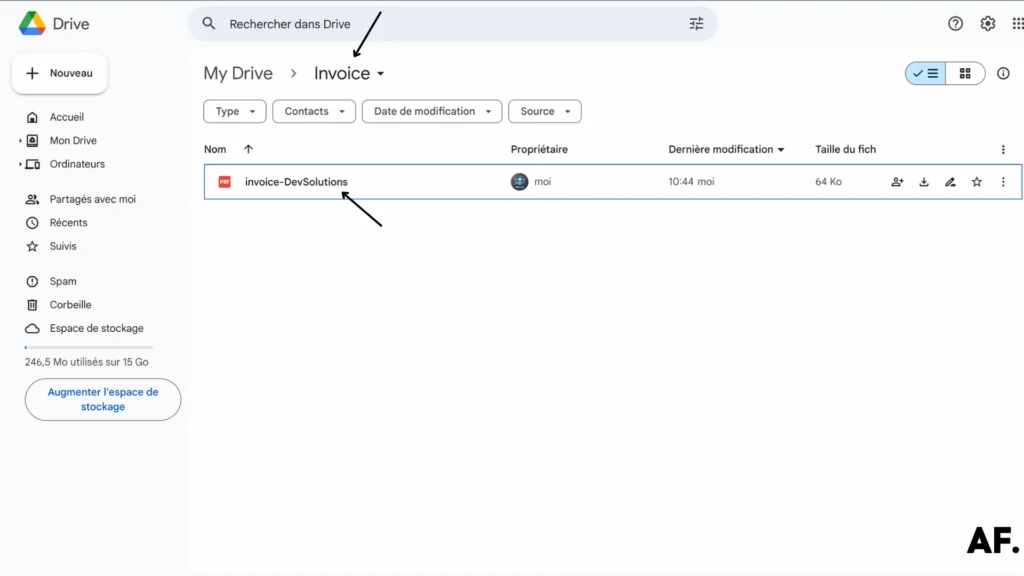
Now, I’ll show you what one of my invoices looks like – this will give you a clear picture of what we’re working with!
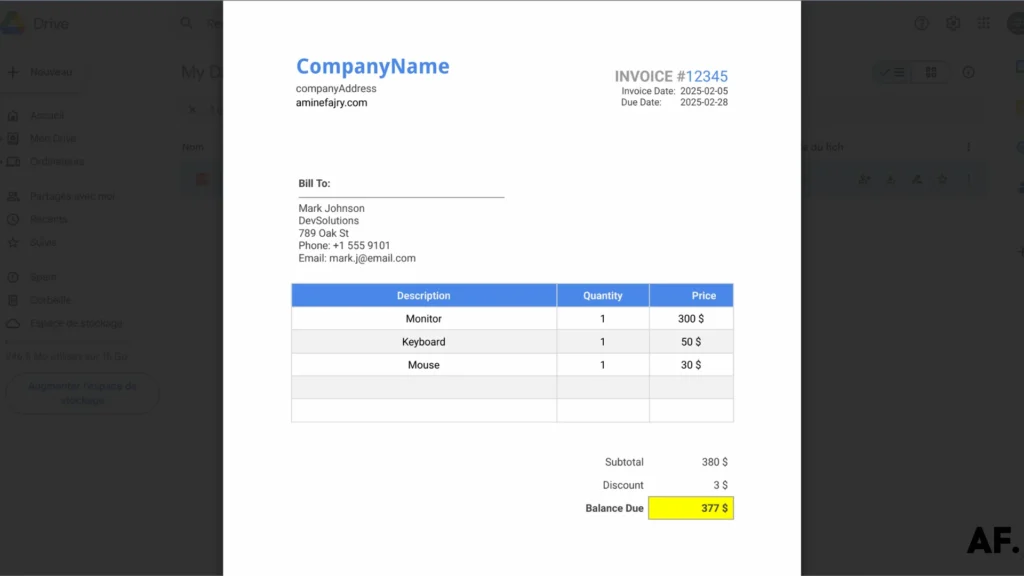
Step 2: Create Your Google Sheet
Next, we’ll create a Google Sheet in the same folder—this will be your tracking system, where all the things will happen!
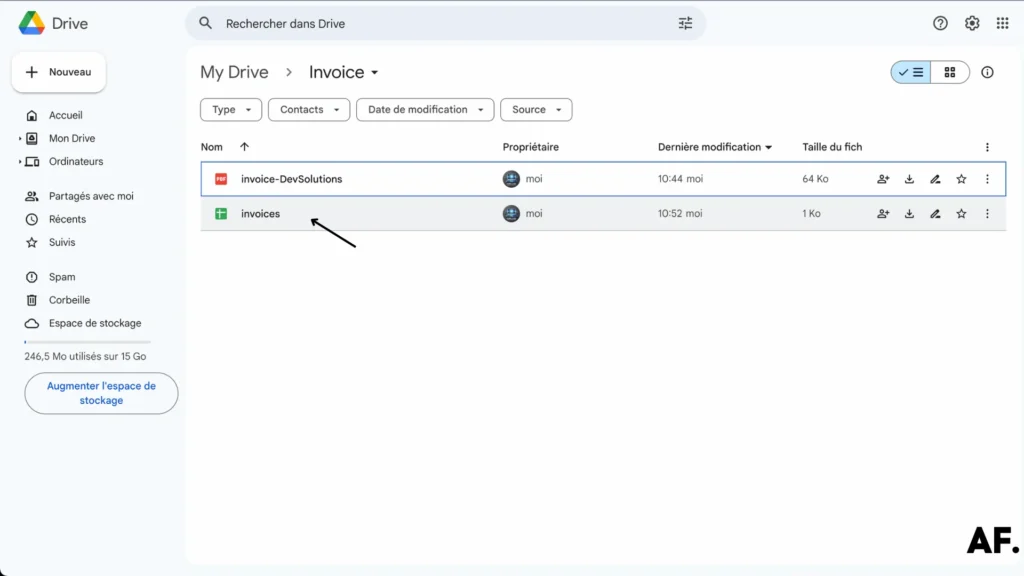
Step 3: Create Your Scenario
Here’s the exciting part – we’re heading to Make.com to set up our automation scenario. The best part? Creating an account is free, so you can follow along without spending a penny!
Step 4: Start Converting PDF to Text
Let’s begin the automation process! First, we’ll convert those PDF invoices into readable text. Add the ‘Download a File‘ module from Google Drive, and paste your file ID into the designated field. This is where we start turning those static PDFs into data we can actually work with!
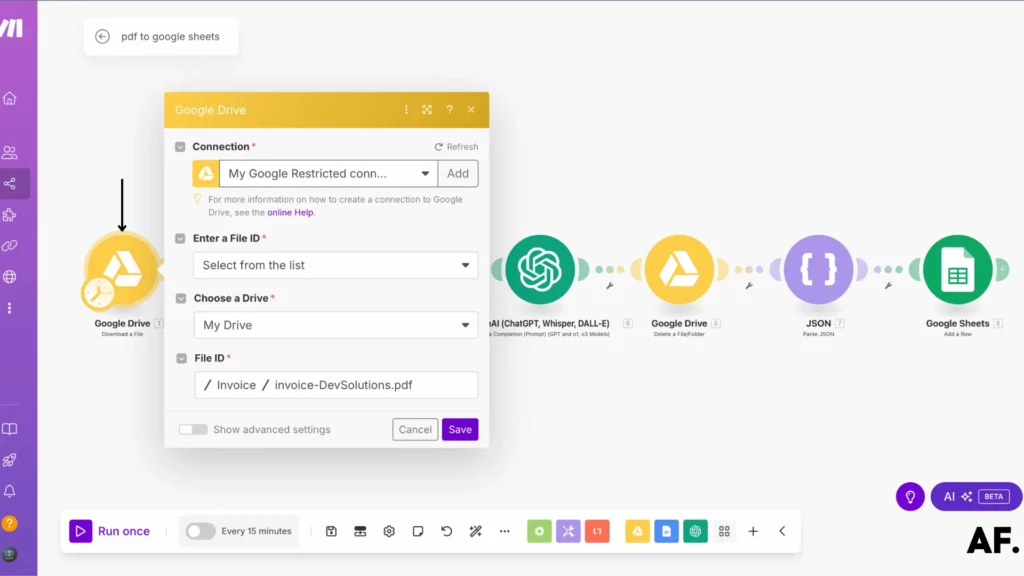
The next step is where we get clever! Add the ‘Upload a File‘ module from Google Drive, and here’s a pro tip: click to show the advanced settings. Now, enable the file conversion option and select this specific format from the dropdown menu: ‘application/vnd.google-apps.document‘. This tells Google Drive to convert your file into a Google Doc that we can easily work with!
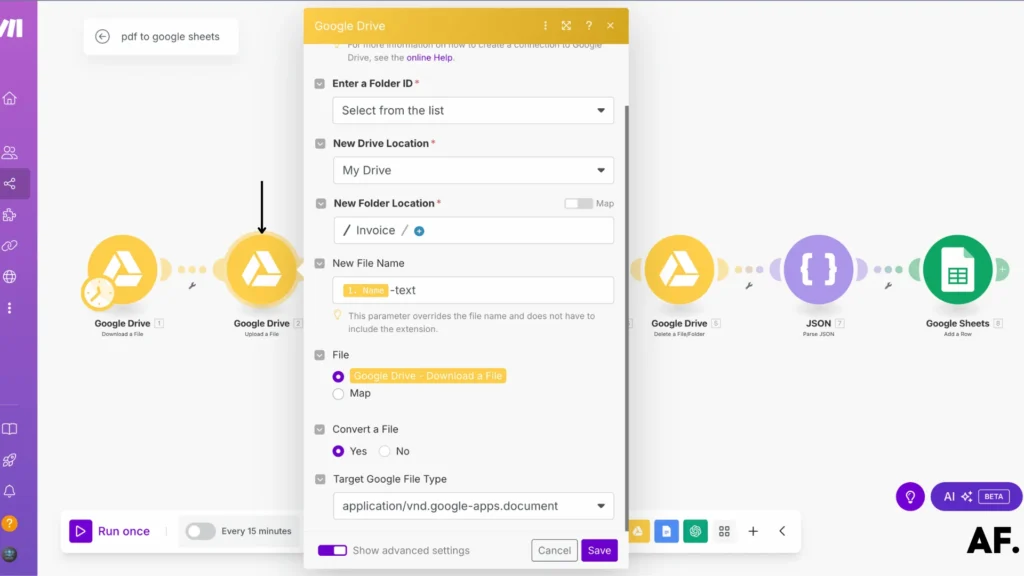
Now comes the fun part—grab the content from your newly created Google Doc! Add the ‘Get Content of a Document‘ module from Google Docs and connect it to your previous step using the file ID from the last module. This will let us access all that valuable invoice information!
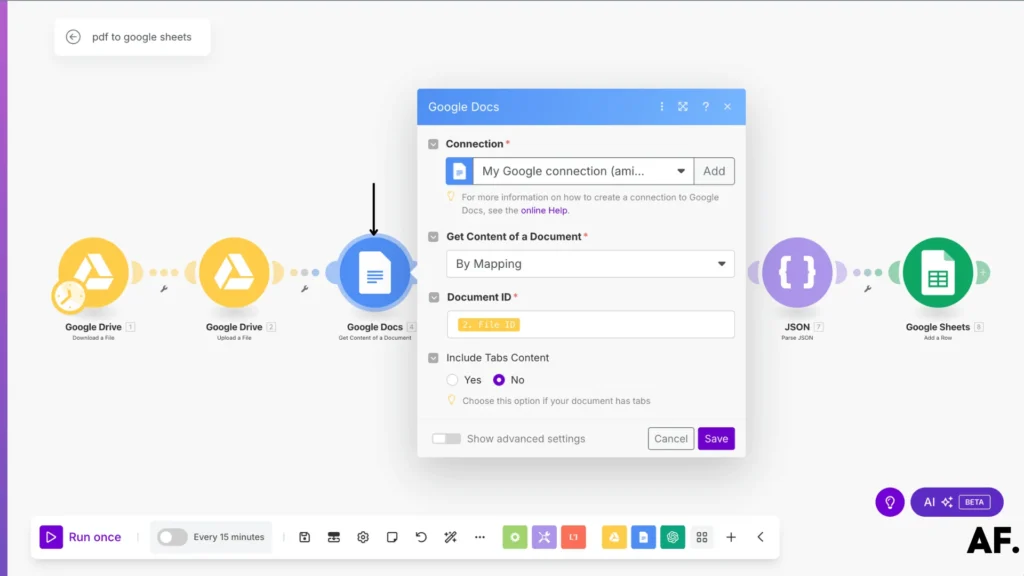
Step 5: Extract Data from Text

Here’s where we make our data useful! ChatGPT module and craft your prompt to extract the important information from your invoice. We’ll tell it to format everything neatly into JSON – think of it as organizing your invoice data into perfect little labeled boxes. Here’s an example prompt you can use:
Extract these details from the invoice: invoice number, date, total amount, and items. Format the response as a JSON object with these fields clearly labeled.Step 6: Delete Google Doc File
Now, let’s keep things tidy! Remember that Google Doc we created earlier when converting the PDF? We don’t need to keep it around since we’ve extracted the important content. Add a ‘Delete a File‘ module from Google Drive and connect it to the document we created. This way, we’ll keep your Google Drive clean and organized, storing only what we need!
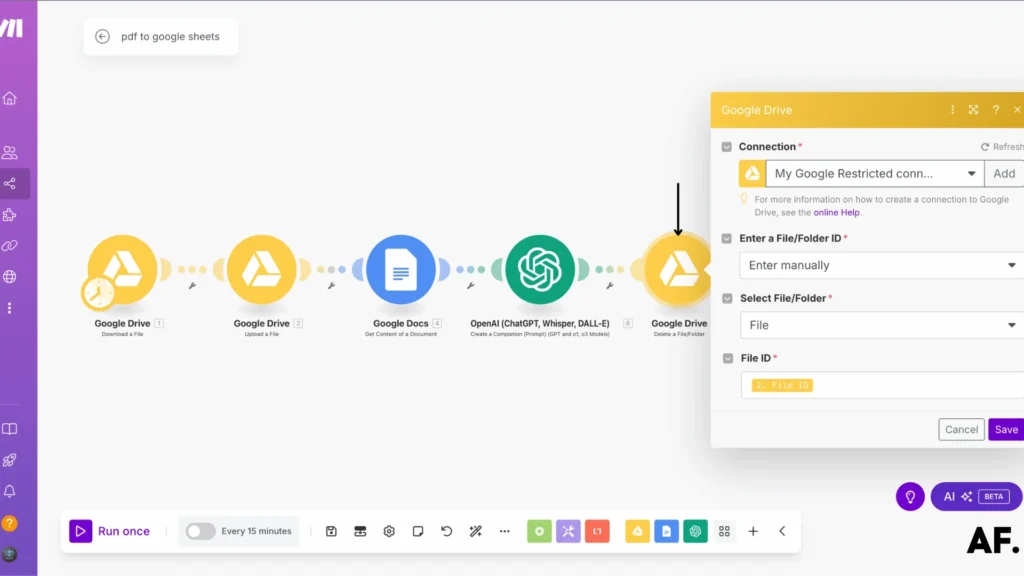
Step 7: Fetch To Google Sheets
Now for the really cool part – we’ll take ChatGPT’s nicely formatted JSON response and make it even more useful! Add the ‘Parse JSON‘ module, which will help us break down all that structured data into individual pieces we can work with. Paste the JSON response, and watch as the module transforms it into data we can use in our next steps!
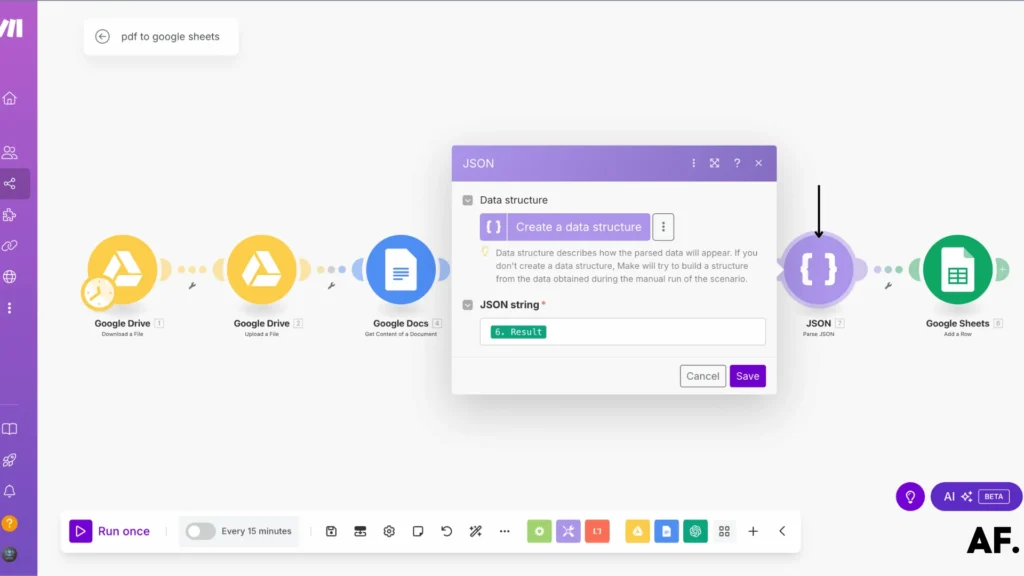
Finally, sending all this organized data to your Google Sheet is time-consuming! Using the ‘Add a Row‘ module from Google Sheets, we’ll map each piece of information to its proper column. Think of it like fitting puzzle pieces perfectly into place—your invoice number, date, amount, and other details will each find their home in the right column. This creates an organized spreadsheet that updates automatically with each new invoice!
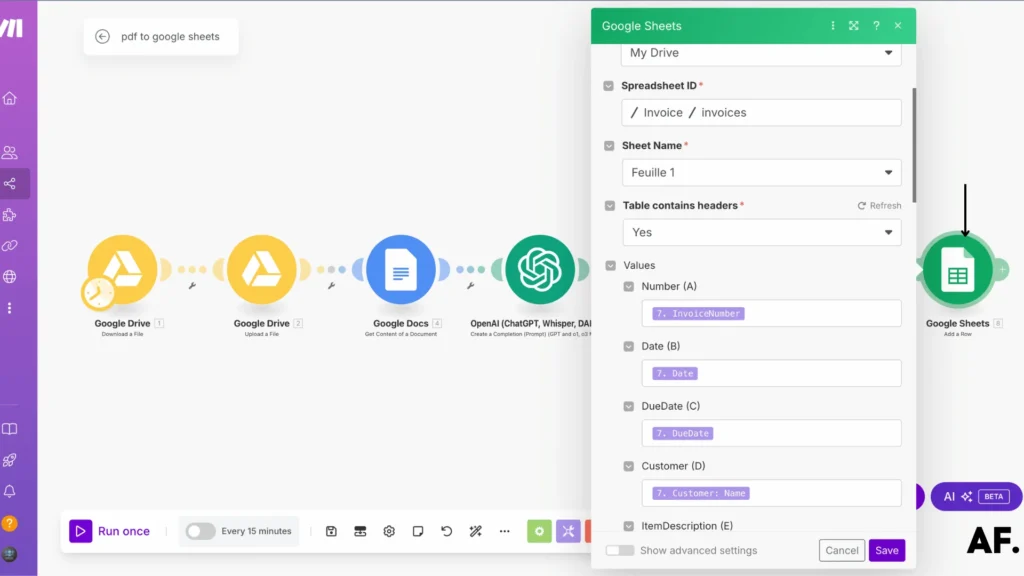
Step 8: Save And Run
And there you have it—time to bring your automation to life! Save your scenario with a click, then hit the run button to watch your creation in action. Your invoice data will move from PDF to spreadsheet, saving time and organizing everything perfectly!
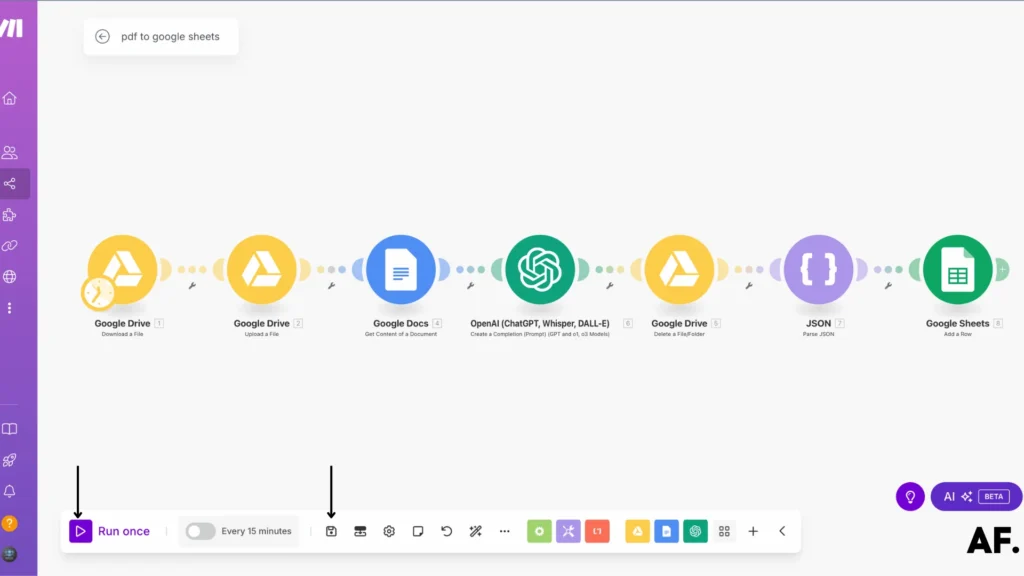
Step 9: Results
Let me show you what success looks like! Here’s a peek at my actual results after setting up this automation – you can see how beautifully organized everything becomes:
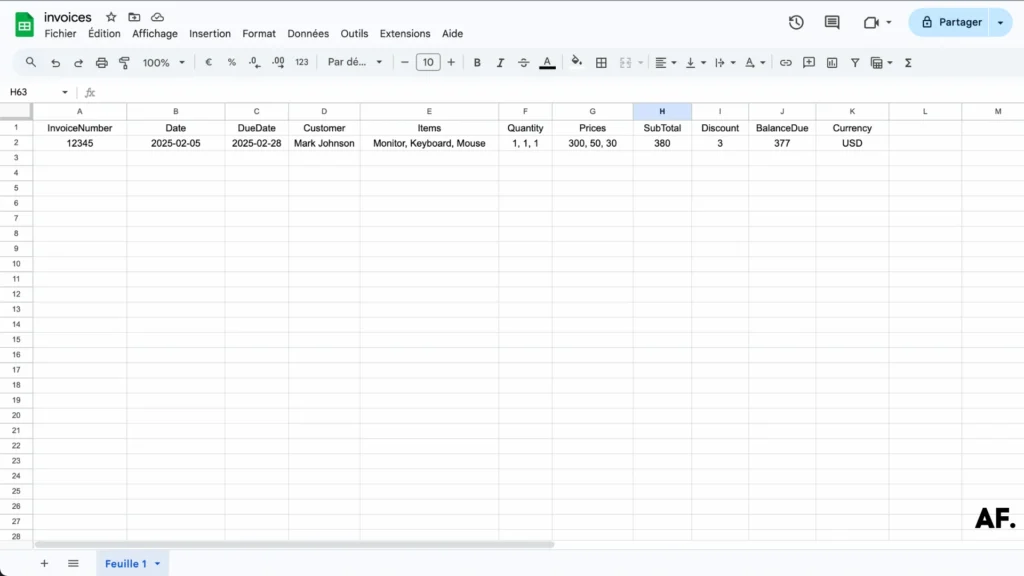
Congratulations! You’ve just built your own invoice automation system! But here’s the exciting part – this is just the beginning. You can take it even further by adding a folder watcher that automatically detects new invoices as soon as they arrive. Imagine dropping a new invoice into your folder and updating everything automatically – no manual triggers are needed! The possibilities for scaling and automating your workflow are endless.
How Can This Conversion PDF to Google Sheets Help You?
Automating the conversion of PDFs to Google Sheets can save you hours of manual work and improve data accuracy. Whether you’re dealing with invoices, reports, or any other structured data, this process ensures a smooth and error-free workflow.
One of the biggest advantages is in invoice management. Instead of manually copying details like invoice numbers, dates, and amounts, this automation extracts key information and organizes it neatly into Google Sheets. This helps businesses track expenses, monitor payments, and generate financial reports effortlessly.
Beyond invoices, this solution works for data extraction from contracts, receipts, and other business documents. If you regularly receive reports in PDF format, converting them to Google Sheets allows for easy data analysis, filtering, and visualization. You can track trends, generate summaries, and instantly share insights with your team.
This automation can significantly streamline data entry and organization for professionals handling client records, orders, or survey results. Instead of manually transcribing information, you get structured data that integrates seamlessly into your workflow.
Another great use case is for students and researchers who need to extract tables and references from academic papers. Instead of copying data manually, this method quickly transfers it into Google Sheets, which can be sorted and analyzed efficiently.
Implementing this automation reduces human errors, improves efficiency, and frees time for more strategic tasks. Whether you’re a freelancer, a business owner, or a data analyst, this process can simplify your workflow and boost productivity. Try it today and experience the benefits firsthand!
Conclusion
Ready to revolutionize your PDF to Google Sheets workflow? The combination of Make and ChatGPT offers a powerful solution to automate your data extraction needs. Remember, the key to success lies in proper setup and testing. Start small, optimize as you go, and watch your productivity soar! Have questions about implementing this automation? Drop them in the comments below!
FAQs
How do I put a PDF in Google Sheets?
Use Make to convert the PDF to text, extract key data with ChatGPT, and automatically send it to Google Sheets.
How to extract a table from a PDF to Google Sheets?
Convert the PDF to a Google Doc, extract the table using a text parser, and format it into structured data for Google Sheets.
Can I make an invoice in Google Sheets?
Yes! Use Google Sheets templates or create a custom one with formulas for calculations.
How do I extract data from a PDF invoice?
Use automation tools like Make and ChatGPT to parse text, extract details, and format them into a structured spreadsheet.

Further Ressources
- How to Convert a PDF to Text in Make
- How to Run Custom Code on Make: Step-by-Step Guide
- The Ultimate Guide to Data Mapping in Make
- How to Automate Google Reviews with Make
- How To Handle Errors In Make: A Complete Guide
- How to Convert Videos into Blog Posts Automatically with Make
- How to Extract an Item from an Array in Make
- What Are Make’s Data Iterators & Array Aggregators? Full Guide

